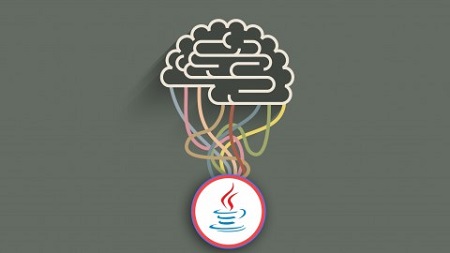
English | MP4 | AVC 1920×1080 | AAC 48KHz 2ch | 6.5 Hours | 1.04 GB
A guide how to create smart applications, AI, genetic algorithms, pruning, heuristics and metaheuristics
This course is about the fundamental concepts of artificial intelligence. This topic is getting very hot nowadays because these learning algorithms can be used in several fields from software engineering to investment banking. Learning algorithms can recognize patterns which can help detecting cancer for example. We may construct algorithms that can have a very very good guess about stock price movement in the market.
In the first chapter we are going to talk about the basic graph algorithms. Several advanced algorithms can be solved with the help of graphs, so as far as I am concerned these algorithms are the first steps.
Second chapter is about local search: finding minimum and maximum or global optimum in the main. These searches are used frequently when we use regression for example and want to find the parameters for the fit. We will consider basic concepts as well as the more advanced algorithms: heuristics and meta-heuristics.
The last topic will be about minimax algorithm and how to use this technique in games such as chess or tic-tac-toe, how to build and construct a game tree, how to analyze these kinds of tree like structures and so on. We will implement the tic-tac-toe game together in the end.
What You Will Learn
- Get a good grasp of artificial intelligence
- Understand how AI algorithms work
- Able to create AI algorithms on your own from scratch
- Understand meta-heuristics
Table of Contents
Introduction
1 Introduction
2 What is AI good for?
3 Complexity theory
Graph-Search Algorithms
4 Why to consider graph algorithms?
5 Breadth-first search introduction
6 Breadt-first search implementation
7 Depth-first search introduction
8 Depth-first search implementation I – with stack
9 Depth-first search implementation II – with recursion
10 Enhanced search algorithms introduction
11 Iterative deepening depth-first search (IDDFS)
12 A* search introduction
Basic Search / Optimization Algorithms
13 Brute-force search introduction
14 Brute-force search example
15 Stochastic search introduction
16 Stochastic search example
17 Hill climbing introduction
18 Hill climbing example
Meta-Heuristic Optimization Methods
19 Heuristics VS meta-heuristics
20 Tabu search introduction
21 SIMULATED ANNEALING
22 Simulated annealing introduction
23 Simulated annealing – function extremum I
24 Simulated annealing – function extremum II
25 Simulated annealing – function extremum III
26 Travelling salesman problem I – city
27 Travelling salesman problem II – tour
28 Travelling salesman problem III – annealing algorithm
29 Travelling salesman problem IV – testing
30 GENETIC ALGORITHMS
31 Genetic algorithms introduction – basics
32 Genetic algorithms introduction – chromosomes
33 Genetic algorithms introduction – crossover
34 Genetic algorithms introduction – mutation
35 Genetic algorithms introduction – the algorithm
36 Genetic algorithm implementation I – individual
37 Genetic algorithm implementation II – population
38 Genetic algorithm implementation III – the algorithm
39 Genetic algorithm implementation IV – testing
40 Genetic algorithm implementation V – function optimum
41 SWARM OPTIMIZATION
42 Swarm intelligence intoduction
43 Partical swarm optimization introduction I – basics
44 Partical swarm optimization introduction II – the algorithm
45 Particle swarm optimization implementation I – particle
46 Particle swarm optimization implementation II – initialize
47 Particle swarm optimization implementation III – the algorithm
48 Particle swarm optimization implementation IV – testing
Minimax Algorithm – Game Engines
49 Game trees introduction
50 Minimax algorithm introduction – basics
51 Minimax algorithm introduction – the algorithm
52 Minimax algorithm introduction – relation with tic-tac-toe
53 Alpha-beta pruning introduction
54 Alpha-beta pruning example
55 Chess problem
Tic-Tac-Toe Game
56 About the game
57 Cell
58 Constants and Player
59 Game implementation I
60 Game implementation II
61 Board implementation I
62 Board implementationj II – isWinning()
63 Board implementation III
64 Minimax algorithm
65 Running tic-tac-toe
Source code
66 Source code
67 Slides
68 Coupon codes – get any of my other courses for a discounted price
Resolve the captcha to access the links!